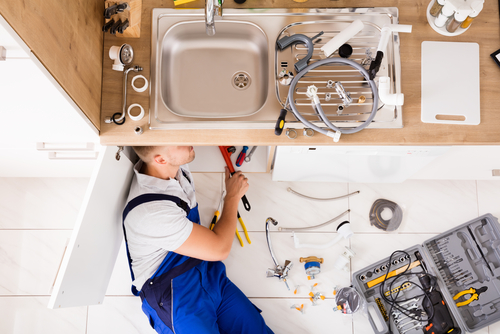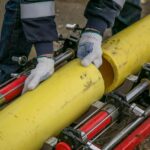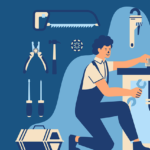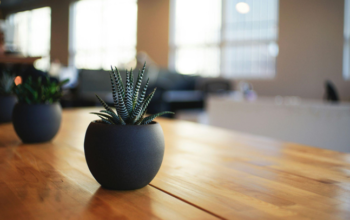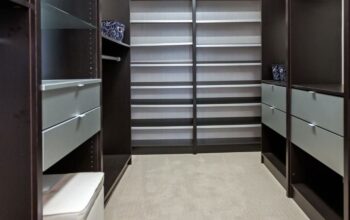Many homeowners overlook the importance of hiring a professional to handle plumbing problems and for complete plumbing maintenance services and for complete plumbing maintenance services. While you can do a DIY repair, it’s essential to gauge if an issue would require beyond your expertise for safety and to get the job done right. In this guide, we’ll help you identify the different situations that would require a professional plumber and those that you can do by yourself. See more info on howtobecomeaplumber.org.
Home DIY Plumbing Projects
It’s not surprising that labor is a significant factor for any plumbing repair project. Bypassing a professional plumber can dramatically cut down the cost of basic troubleshooting steps by 50%. You don’t have to purchase expensive supplies and equipment because there’s rental options available from the local hardware. You can also borrow a specialized tool from a friend or a community tool-lending library. Of course, you should do your homework and watch online videos or read tips and tricks to help you tackle a leaking kitchen sink or a gurgling toilet. Here are the most common DIY plumbing projects:
- Turning Off Water Supply
If you need to turn off your water supply for some reason, this is a straightforward task that you can confidently do on your own in 5 minutes or less. The location of the shut-off valve depends on the site of the main line. The valve is usually near an entry point for a basement foundation as the line enters on the side wall or floor. To turn off the water supply, rotate the flow handle 90 degrees, so it’s perpendicular to the pipe. To turn it back on, rotate in reverse.
- Replacing a Shower Head
It’s easy to replace a shower head, and the things you’ll need to accomplish this task include a new shower head, Teflon tape, a pair of pliers or wrench, mineral spirits or lime/rust remover. For a high-end model shower head, it costs $40 upwards, and a basic chrome costs $5 to $7. Remember that shower heads can be handheld, fixed, or both.
You’ll spend 15 to 30 minutes to complete the task. First, loosen the old shower head using an adjustable wrench or pliers. Remove the shower arm’s calcification, rust, and other debris using a solvent solution. Let it dry and apply Teflon tape. The new shower is hand-screwed into the threads. Tighten and turn on the water to check for leaks. When installing a hybrid shower head, screw a diverter to control the flow of water between the two heads. Refer to the installation instructions of the manufacturer to ensure that you’re connecting it correctly.
- Replacing Faucet Fixtures
For this task, you need a new faucet assembly, a basin wrench, mineral spirits, plumber’s putty, and a hex wrench. The cost of a basic chrome faucet is $30 to $40 and $400 and above for a high-end faucet. The hot and cold valves should be closed under the sink, or turn off the main valve if there are no valves.
The next steps are unscrewing the lines, disconnecting the lift rod, removing the nuts, and cleaning the drain and sink. Insert your new faucet into the mounting holes, then screw and tighten the nuts. Check the drain rod assembly, reconnect the supply lines, and let the faucet run to inspect for leaks.
- Installing or Replacing a Faucet Aerator
For this project, you need a new aerator and a socket wrench. Installing an aerator is relatively easy. It’s one of the most cost-effective and most accessible ways to reduce water usage and save on your utility bills. The steps involve unscrewing the old aerator by hand or using an adjustable wrench and screwing a new one.
- Replacing or Resealing a Tub Drain
The things you’ll need for this project are a new flange, drain stopper, mineral spirits, a drain shoe gasket, plumber’s putty, a drain removal tool, adjustable wrench, and a flathead screwdriver. The entire procedure takes 30 to 60 minutes.
When to Call a Professional Plumber
Don’t just jump into a significant plumbing project if you don’t have the right know-how because it can result in personal injury and damage to your property. Specially for gas plumbing maintenance and repairs, always call a professional. Here are the most common problems that would require the knowledge and expertise of a plumbing service provider like Lone Star Plumbing.
- Low Water Pressure
It’s hard to rule out the exact cause of dribbling showers and sinks. The possible reasons are pipe obstructions, poor pipe design, and city supply issues. Attempting to resolve a low-pressure problem may result to damage on the sewer lines.
- Pipe Blockage
The causes of blocked sewer lines are sediment buildup, tree roots, or non-flushable items. Don’t attempt to clear the blockage using chemicals or even rodding machines. They can damage the sewer lines that cost thousands of dollars to repair. Repairing a broken sewer line on your own can expose your property to raw sewage and possibly damaging the sewer lines of your neighborhood.
- Burst Pipes
During winter, the pipes freeze and expand, causing the pipe to break. In return, cracked pipes may cause major flooding.
- Major Installations
When it comes to updating your bathroom or kitchen, it may involve moving fixtures and appliances. Relocating dishwashers and sinks will require moving supply lines and drains.
Additional notes: Plumbing Glossary covers the most common plumbing terms you need to know.
Final Thoughts
The other plumbing tasks you can do on your own include caulking a tub, fixing a running toilet, installing an automatic dishwasher, and manually unclogging a slow main drain line. Always keep in mind to prioritize your safety over your budget. Don’t put yourself in a hazardous situation to save money on professional repairs. Only perform DIY if you’re confident doing it, otherwise, don’t compromise your safety and your property. It’s best not to take a chance and contact a plumber if you’re not sure what to do and how to do it.
Related Posts

Loves home. I am here to provide how to make your home a much better place. 🙂 Blogging about HomeDecor, Home Improvements and more.
